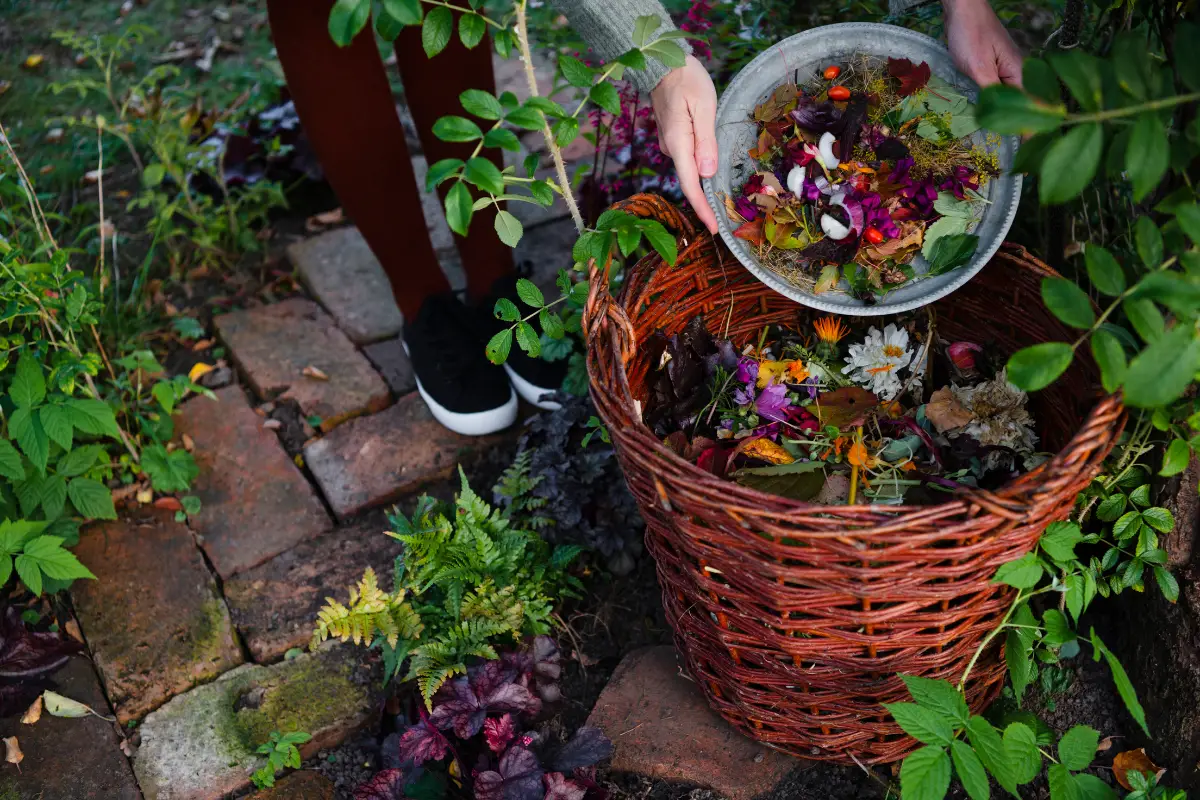Types of Compost Containers: 6 Varieties You Should Know About
“What compost bin should I buy?”
It’s a question asked by many budding gardeners and eco-conscious consumers. And not knowing the answer can prevent those with even the best intentions from jumping into the world of composting.
There are several different types of compost containers to choose from, each with unique pros and cons. Fortunately, finding the one that works for you is probably easier than you think.
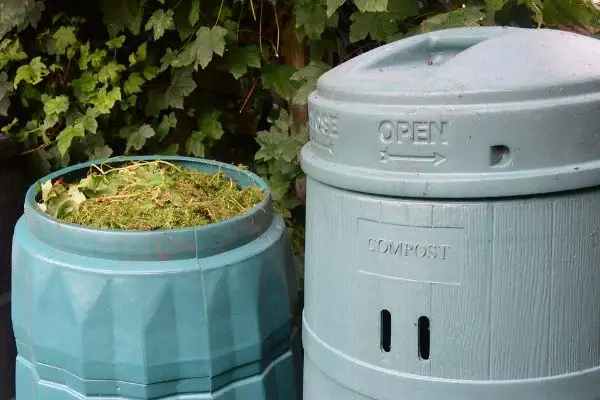
5 Types of Compost Containers
1. Bokashi Bucket
Technically, Bokashi is not exactly composting, but it is a great method for breaking food scraps down. As such, it definitely belongs to this list.
Bokashi containers are tightly sealed buckets with a spigot at the bottom to release excess liquid. Bokashi relies on fermentation (rather than decomposition) to break food waste down with the help of special microorganisms that you add to your scraps.
As this is an enclosed system, it works very well indoors. A tightly sealed Bokashi bin does not smell and is inaccessible to insects and other living creatures.
However, it is important to keep in mind that Bokashi is a two-step process. After your food scraps have ‘fermented’, they need to be added to a traditional compost bin, tumbler, or be buried in a garden.
For those without a backyard, community gardens often accept this type of ‘compost’.
2. Stationary Bin
Stationary containers are the most popular types of composting bins. This type of composting container can be bought premade or DIYed fairly easily using a plastic tote or garbage can.
Fresh yard or kitchen scraps are typically added to the top of the bin. The material inside may need to be manually turned using a pitchfork, shovel, or another garden tool.
Many stationary composters feature a lid to keep rainwater and pests out. If you’re worried about your backyard compost attracting local wildlife, a lidded stationary bin is one of your best options.
3. Open-Air Pen
Open-air compost bins are far from the most attractive. But they are incredibly straightforward to both build and maintain.
An open-air compost pen offers easy access for adding fresh material, turning the heap, and eventually removing finished compost. It also ensures that the composting material receives plenty of aeration.
On the other hand, this type of compost bin offers zero protection from rain or pests.
4. Tumbler
Aeration is an important part of healthy compost. While manually turning compost can help distribute oxygen throughout, this chore is neither easy nor fun.
Composting tumblers are built to spin via a hand crank or (in some cases) a powered motor. This ensures that the compost inside is constantly being exposed to oxygen. It also maintains a consistent temperature throughout.
This type of compost bin offers many of the same benefits as a standard stationary bin with an extra dose of convenience. Since tumbling bins must be sealed to prevent compost from spilling out, they also deter insects, rodents, and other pests.
5. Indoor
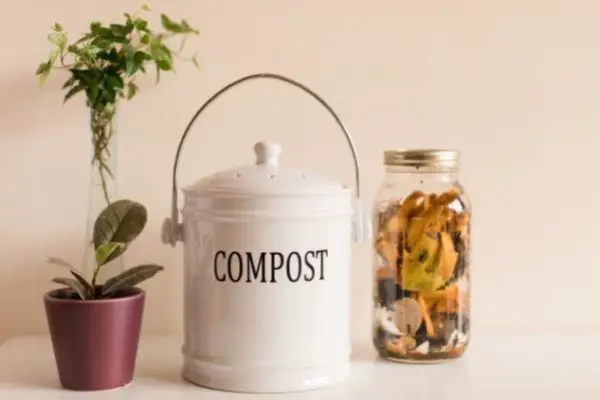
Indoor composting containers are a great option for apartment dwellers and others with limited outdoor space.
As mentioned above, Bokashi is a great option, but there are others.
The quickest indoor composters rely on electricity to break down food scraps. They are designed to be kept on a kitchen counter or store in a cupboard or closet.
The end product is not always identical to that created by a traditional compost pile. But it can still be used as a soil additive!
Keep in mind that there’s a big difference between indoor composters and countertop compost storage bins. The latter only holds onto kitchen scraps until you have a chance to transfer them to an outdoor composter. They will not produce compost by themselves.
5. Worm Bin – Indoor and Outdoors
Worm bins are special composting systems that rely on live worms to break down food into usable fertilizer. Many worm bins can be kept indoors as well as outdoors.
While worm bins can be almost any size, compact versions are extremely popular. Since worm-based composting, also called vermiculture or vermicomposting, doesn’t use high heat, worm bins can be much smaller than traditional composting containers.
How To Pick A Compost Bin
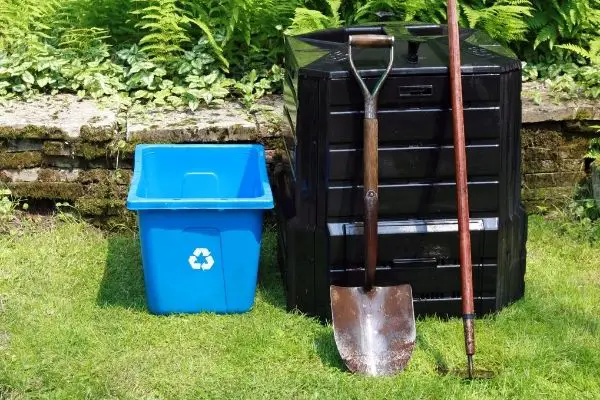
With so many types of compost bins available, knowing which is right for you can be a tricky decision. Here are the most important factors to consider when shopping for a new composting container:
Size
It’s possible to scale most types of compost containers up or down to fit your specific needs. However, there are some types better suited to certain size needs than others.
For example, someone with tons of bulky lawn debris should opt for an open-air pen over a sealed container. The latter may not be able to accommodate such large amounts of compostable material.
On the other hand, you’ll want to opt for a small composting bin if you have limited property or will be using it indoors.
Location
Where your new compost bin will be set up can make choosing a type very easy. The most important question to ask yourself is whether or not your compost will be kept indoors or outdoors.
Indoor composters, as we mentioned, do exist. But you’ll need to select a model specifically designed for indoor use.
Placing a compost container outdoors isn’t just about having enough space. You or your neighbors may want an enclosed bin to deter odors, pests, and unpleasant sights. Or you may want to invest in a raised tumbler to prevent lawn damage.
Portability
Some compost containers are more portable than others. Be sure to think about how portable you want your new compost bin to be before making an investment.
The most portable composters are small and made of lightweight materials. Many different compost bins and tumblers even include wheels for easy transport.
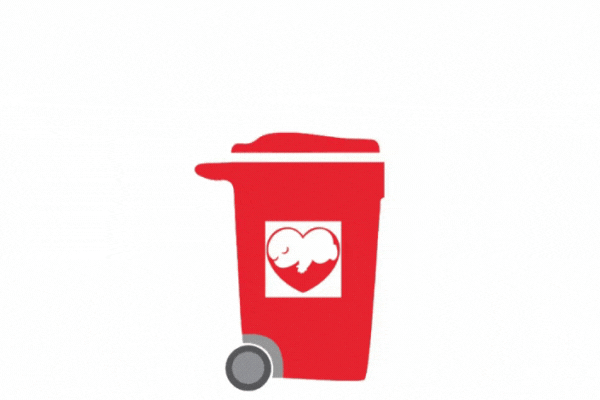
Meanwhile, open-air pens and large bins cannot be moved without emptying and/or disassembling the container.
Frequently Asked Questions
What are the differences between continuous and batch composting?
When narrowing down the best type of compost bin for your home, you might notice the terms “continuous” and “batch” being used. These terms refer to how the composter actually processes organic materials.
Continuous composting bins are constantly breaking down the material inside. You can add fresh material at any time. Finished compost is removed periodically to prevent the bin from overflowing and/or as needed for the garden.
Batch composting bins process a set amount of organic material at one time. You cannot add more material once the composting process has been started. However, batch composters produce finished compost at a much faster rate than continuous containers.
Which materials can be used for a compost bin?
Most compost bin types can be made out of almost any material imaginable. Plastic is the most common composting bin material, largely because it is lightweight and durable.
DIY compost containers may be made of brick, stone, metal, or wire mesh. Even wood can be used to build an open-air composting pen. Just keep in mind that wood itself is compostable and will slowly break down over time.

